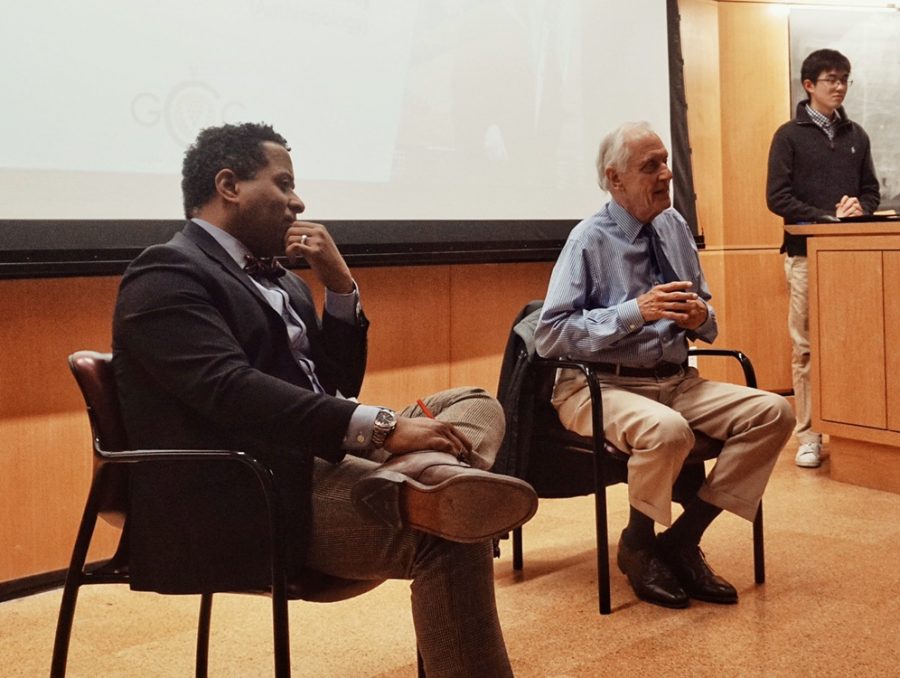Coronavirus Outbreak: A New Global Pandemic?
February 25, 2020
On February 18, Global China Connection invited Dr. William Schaffner from the Vanderbilt University School of Medicine and Professor T.S. Harvey from the Anthropology department for a joint panel discussion on the recent coronavirus outbreak in China.
According to CNN reports on February 23, over 79,930 coronavirus cases have been confirmed worldwide, with a global death toll of 2,465. Recently, South Korea and Italy have also seen a rapid increase in its confirmed cases with more countries taking precautionary steps to prepare for potential outbreaks. In total, 32 countries and territories so far have reported confirmed coronavirus cases.
As a professor of Preventive Medicine who also specializes in the study of infectious diseases, Dr. Schaffner offered an overview of the nature of the coronavirus from a medical perspective and his opinions on the Chinese government’s responses to the crisis. Professor Harvey, on the other hand, employed an anthropological approach, touching upon the issue of crisis management and the impact of media portrayal of risk on people’s understanding of a crisis.
Starting with a brief introduction of coronavirus, Dr. Schaffner pointed out that COVID-19 (the official name of the new coronavirus given by WHO), a respiratory virus, is a member of the larger family of coronaviruses that cause illnesses ranging from the common cold to more serious ones like SARS-Cov and MER-Cov. Although coronaviruses usually circulate among certain animal species, in rare cases, some may develop the capacity to “jump species” and survive in human hosts. Dr. Schaffner further explained that COVID-19 is unique since it is a new strain previously unidentified in humans. Further, it can transmit during the incubation period when no symptoms are shown in patients.
In his discussion of the Chinese government’s response, Dr. Schaffner characterized the quarantine measure as “the largest public health experiment in the history of humankind.” Although the effectiveness of this effort is still unknown, Dr. Schaffner clarified that the underlying rationale for the quarantine aims to prevent people from entering “other people’s breathing zones to reduce the likelihood of transmission and try to bring the epidemic to a close.” Dr. Schaffner further praised the Chinese molecular virologists for their brilliant effort to identify this distinctive coronavirus, quickly sequencing the genome and the immediate transmission of the information to the world’s scientific community. Dr. Schaffner pointed out that this has allowed scientists around the globe to create diagnostic tests, and, within hours of receiving the information, various teams at the CDC have started to develop vaccines and therapeutic agents.
Contrasting from Dr. Schaffner’s approach, Professor Harvey anchored his speech on the issue of crisis management and crisis communication. He stated, “what constitutes a crisis is situational and it is a product of a historical, political, and social process.” Apart from the epidemiological data, people at risk constitute another essential part of the crisis. In further explaining the pattern of common governmental response to a crisis, he pointed out that it always begins with a phase of denial and then a phase of avoiding responsibilities. Regarding this outbreak in particular, the very fact that this is a new coronavirus has left room for ambiguity and as Professor Harvey put it, “it is up to the government’s decision to either attenuate risk or amplify it.”
When asked about comparing COVID-19 outbreak to the H1N1 flu outbreak in the U.S. in 2009, Dr. Schaffner underlined that COVID-19 has gotten more media and public attention because it is seen as exotic and mysterious. While H1N1 has turned into a seasonal disease with increasing familiarity, there is still a lot to learn about COVID-19 and the possibilities of complete eradication. On the other hand, Professor Harvey compared how the naming of the virus at different stages has revealed people’s fixation on “where” the virus came from, and the resurfacing of ancient stereotypes against a certain ethnicity. Professor Harvey reminded that this “stigmatization of particular ethnicity” and “the construction of otherness” through various representations has been seen throughout U.S. history such as the rise of Islamophobia after 9/11. Thus, there is an urgent need to unpack and grapple with those past histories.
In closing the discussion, Professor Harvey stressed the importance of creating a discourse that reduces people’s anxiety without downplaying the severity of the issue. He stated, “while we don’t want to give people a sense that everything is fine, we don’t want people to think that the only way that can be safe is to lock up people who look certain ways.”
Image credit: Yanni Zhang








